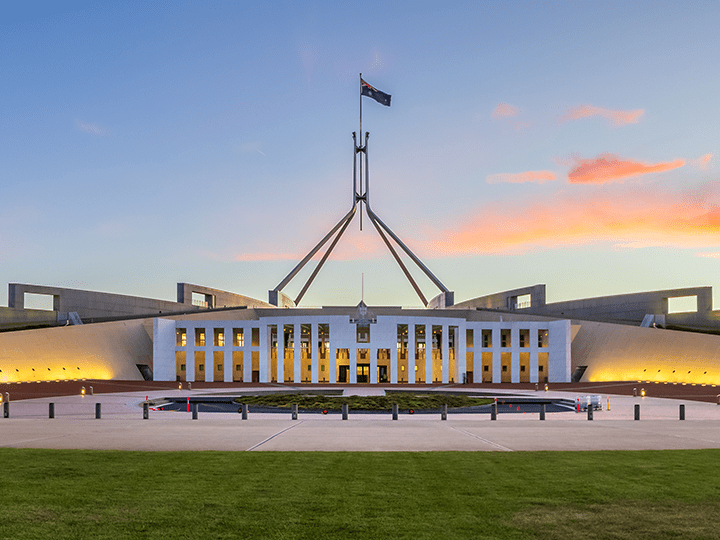Transcript:
Simon Hele:
Hi, everyone. My name is Simon Hele, Director of Perks Private Wealth, and I’m pleased to welcome you to another edition of the Charts that Matter. As always, I’m joined by Cristo Hall, Chair of our Investment Committee. Today, I’m gonna discuss with him our Investment Committee thoughts and views on the markets? What’s happened? Where are we now? And how we see things going forward?
Welcome, Christo.
Christo Hall:
Thanks, Simon. Good to be with you.
Simon Hele:
Christo, we saw the RBA hold rates at the most recent meeting this week. Have we reached the peak in rates and inflation?
Christo Hall:
I think Simon we have definitely seen the peak of inflation, not just in Australia, but in the US. I think the focal point is the rate that inflation is coming down. That is the key and if you look at, where we sit today running at inflation rates, in Australia of just under five percent, and the US have come down a little bit further, than that. But I think whatever investors are really preoccupied with is where that will settle down to. Interestingly, you’ll see the chart that comes up on the screen. You’ll see that trajectory of the inflation in the US, but what is more telling is the spread between what we call the ten-year yields and the two-year yields, that has started to close. And that is, signalling that, there is still some inflation concerns in the US, even though the overall rates come down. There is, increasing nervousness about, how prickly that will move lower from this point onwards.
Simon Hele:
So if inflation is moderating, yet we’ll we’ll stay higher for longer, what are the leading indicators telling us and how have they evolved since our last chat?
Christo Hall:
Yes. It’s really interesting Simon, the leading indicators are still indicating that we’re heading into recessionary territory.
And so, I think that’s still the outlook. It’s the magnitude of the recession, which is the key and certainly the recent figures announced by the treasurer, yesterday was showing that the economy is still slowing in Australia, so the run rate is going to be around about a two percent, kind of GDP growth. Which is sub trend in Australia for the next twelve months. And I think it’s a similar profile for the US at this point. But that may actually deteriorate further. So that’s something we need to be conscious of and is specifically related to China, which we’ll talk more about as we go through this as we go through this video.
If you look at the economic surprises index, Australia and the US have been holding up better than, European and China counterparts, but certainly the probability of recession, is still elevated.
And we’ve still got some work to do to get through this inflation and higher interest rate environment to get comfort that we’re really through. The whole process that’s panned out really since COVID, and the policies that we adopted by the government and the central banks. It’s been a very challenging period.
Simon Hele:
It’s interesting you touch on China For us here in Australia, we’ve been watching what’s happening in China for some time. What can you tell us about what’s happening there now and what that means for Australia?
Christo Hall:
Yes. So, China’s a really hot topic at the moment, and we’re seeing continued, down raise to economic growth forecasts for China. And Australia is the most reliant on a relative basis on China’s economy for our own economy because of our resource’s exposure so it’s very important, to where, you know, we head as a country from an economic growth perspective.
The issue with China is there’s just so much debt particularly in the property market and we’ve seen, the two largest, property companies in China come under significant duress in the last month.
And why that’s such an issue is that the property market as a percentage of China’s economy is much greater than that of other countries. It’s very dependent on that and also the flow on effects of that through other parts of their economy.
Why that’s even more critical for Australia is that property in China, consumes a lot of steel and iron ore is a big contributor obviously to the steel manufacturing process so that flows directly, through to Australia and the demand for that commodity.
So really, we’re looking at, a situation where we need the Chinese government to become a lot more forceful on stimulus to try and reboot that economy because otherwise, if we can see this trajectory, it’s very similar to what we saw in Japan, over the last decade or so, which sees a significant amount of deleveraging and sub trend economic growth, which really is not going to help the world start to recover as we come through the effects of COVID.
Simon Hele:
And what about markets? Equity seems to have defied the broader economic worries particularly mega stocks in the US. What’s been driving this recent market rally?
Christo Hall:
We’ve seen a very narrow rally in the US market. It’s been led by the big tech stocks, which have a, you know, very meaningful waiting within the S and P five hundred, particularly.
And that has been driven predominantly by it, AI, and what that may mean for, cost structures of companies going forward. There’s a lot of expectation that’s been built in on AI. We know that it’s definitely here to stay. What’s really, really difficult is actually knowing what the tangible earnings benefit will be from that. It’s very difficult because it’s evolving so quickly, but it’s certainly going to have a role play, but those mega cap stocks, are looking very, very expensive under any metric.
If you look at them, what that means for the US market, the US market is looking expensive, relatively expensive to history. Look, as is the Australian market, but I think when you think about the multiples that these markets are trading on you can look at the certainty of earnings around that and certainly, I think there’s more earnings vulnerability in Australia because of that China issue that I previously mentioned, our source exposure than there is in the US. So, we need to be very conscious of that. That’s why we’re we’re more favourable towards overseas equities and Australian equities at this point from a, from a valuation standpoint.
I think going forward, we’ll have to see the delivery of those really expensive mega caps on an earnings front because there’s a lot of expectation hat’s been built into that, we need to see that come through. But the AI topic is reminds me, you know, of 1999 with obviously, the internet, really taking off, and influencing companies. It will be here, It’s definitely going to be a very, very powerful theme, but trying to tangibly work out, you know, what that means for Company earnings is gonna be the challenge and what you’re paying for those earnings. But the market seems to be quite euphoric with those stocks at the moment.
Simon Hele:
Thanks, Christo. That’s incredibly insightful.
We always like to finish these chats by asking you to look into the crystal ball. Can you talk about the range of scenarios you see as we look ahead? And in the context, where are the risks and opportunities in investment markets?
Christo Hall:
Yeah. Thanks, Simon.
I think the way you got to look at this is on a probability weighted basis because not can never, predict exactly one outcome, and which way it is to kind of play out. But I think, what we call our base case scenario where inflation still remains a little problematic, but starts to starts to continue to move lower, but will still remain a bit elevated compared to history, and that will mean that we’re going to have, sub trend economic growth, and that will put a cap on, the earnings growth, for example, from the equity market. I think that sort of scenario, both in the US and, Australia, is probably a sixty percent chance of occurring.
So I think that’s my base case. China will also play into that, suppression of earnings recovery in in the Australian market.
I think the worst case scenario, is or bare case scenario would be a twenty five percent waiting from here. And what that scenario looks like is that we continue to have real supply side constraints inflation remains, higher for a lot longer. It still comes down, but then it settles at a higher rate.
Which means that, the timeline for rate cuts gets pushed out. And therefore, the economies really have to deal with higher rates and we already know the consumers under enormous pressure but that becomes even more pronounced.
That scenario would be, would not be good for both bonds or equities. In fact, for any asset class, if that really sought, inflation controls, really not be as effective, and getting it down to, the really low level that we’re that we’re wanting to see.
And the upper case level was more of like a fifteen percent probability, which is almost more than the goldilocks scenario whereby supply chains completely open up, China stimulates aggressively, which will help Australia, obviously, inflation could be used to fall quickly in a very, very methodical manner. Back to levels we saw pre COVID, and AI kicks in. Then we have, a resetting of cost basis, not just in America, but across the world really so you get better than expected earnings scenarios from equities in a very friendly inflation environment, which would see markets move higher.
I put that at the lower end of the of the risk weighting, as I’ve said.
So, when you blend them together, what it means for me is that we’re just going to have subdued returns from equities and fixed interest, for a period yet. It doesn’t mean it’s all bad. It just means it’s going to be lower, lower returns for, you know, equities and fixed interests.
I think the, the problem area is going to be property still, and I don’t mean residential I’m talking about commercial property, and more specifically, within that retail and commercial property and we’re starting to see the, what we call, the cap rates, which are the real valuation metrics for property valuations beginning to rise. So we’re good to see, I think, some more know, some more pain or more headwinds in that asset class.
So state diversified, that’s the message, we’ve gotta get through this period. I don’t think it’s gonna be anything catastrophic, but I’m not bullish either. I think it’s gonna be a very benign but volatile period, more of a range trading scenario.
Just one comment. If you look at the fixed interest side, you look at the opportunities existing there. And this is why we’re probably a little bit more, optimistic on bonds than we are on equities.
If you look at where the real rates sit, in the US, history has shown that, they’ll mean reversed. And that will result in some capital gains being generated, from exposure to quality investments, in the fixed interest market. Similarly in Australia, if you look at the equity market compared to the three year cash rate, they’ve converged. And normally, you’d expect around about a two percent spread between the dividend yield of the Australian market and the three year cash rate, that’s completely closed. So you’re taking on a greater risk in the equity market for the same sort of income return. So to me, that’s, again, favouring, you know, Australian, bond exposure ahead of Australian equities, in RSA allocation.
Simon Hele:
Thanks, Christo, and thank you for joining us for this edition of the charts that matter.








